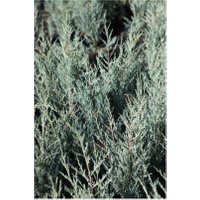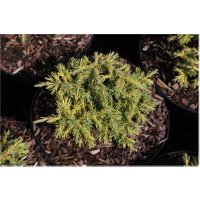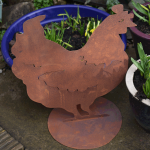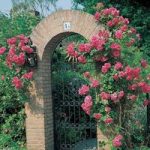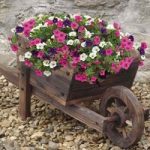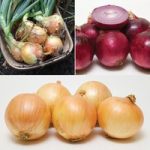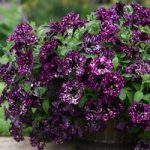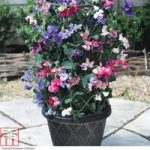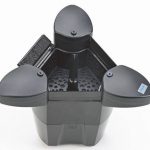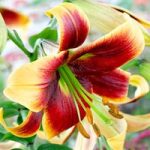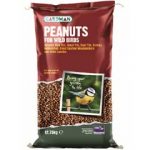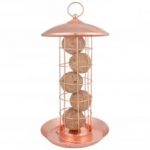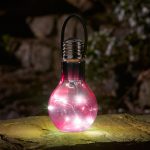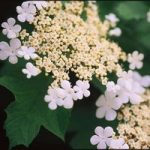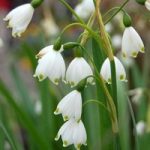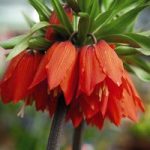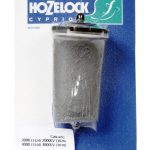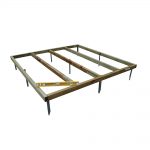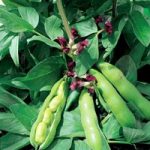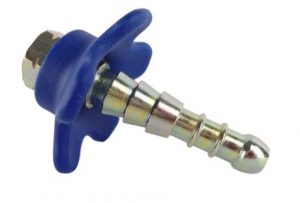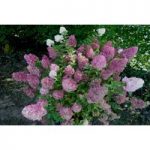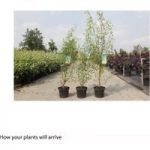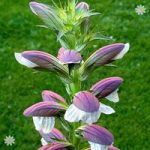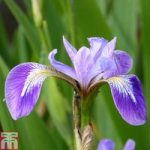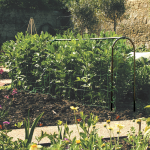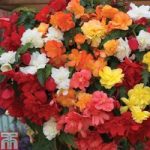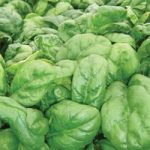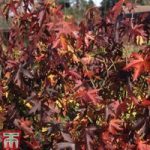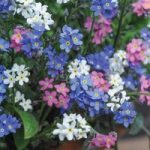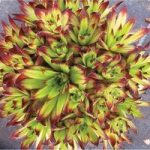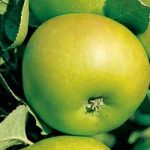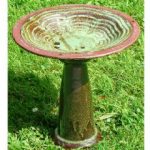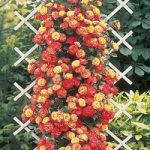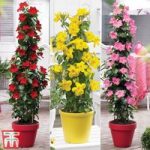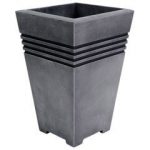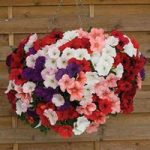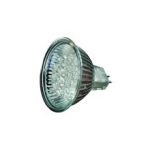Category Archives: Plants & Seeds
Lonicera kamtschatica ‘Myberry Bee’
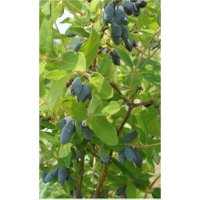 Grown in a sunny spot in the garden, Lonicera kamtschatica ‘Myberry Bee’ will reward you with a supply of tasty sweet berries which you can eat straight from the bush or bake in a cake or pie or even make into jam. Honeyberries are considered a ‘superfruit’ and fetch a high price in the supermarket,
Grown in a sunny spot in the garden, Lonicera kamtschatica ‘Myberry Bee’ will reward you with a supply of tasty sweet berries which you can eat straight from the bush or bake in a cake or pie or even make into jam. Honeyberries are considered a ‘superfruit’ and fetch a high price in the supermarket,
Lonicera kamtschatica ‘Dolce Vita’
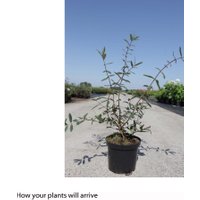 Plant Lonicera kamtschatica ‘Dolce Vita’ in your garden and look forward to a long and healthy life! The attractive blue fruits of this deciduous shrub are packed full of antioxidants and Vitamin C, so having a ready supply at your fingertips must be good for you and your family. Baked in pies or cakes, made
Plant Lonicera kamtschatica ‘Dolce Vita’ in your garden and look forward to a long and healthy life! The attractive blue fruits of this deciduous shrub are packed full of antioxidants and Vitamin C, so having a ready supply at your fingertips must be good for you and your family. Baked in pies or cakes, made
Lonicera kamtschatica ‘Kalinka”
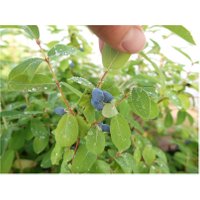 Grow your own Honeyberries and have a ready supply of these sweet and juicy blue fruits. High in antioxidants and Vitamin C, the fruits of Lonicera kamtschatica ‘Kalinka’ are not only delicious but so full of goodness that they are considered a ‘superfruit’. They can be baked in a pie or a cake, made into
Grow your own Honeyberries and have a ready supply of these sweet and juicy blue fruits. High in antioxidants and Vitamin C, the fruits of Lonicera kamtschatica ‘Kalinka’ are not only delicious but so full of goodness that they are considered a ‘superfruit’. They can be baked in a pie or a cake, made into
Lonicera kamtschatica ‘Myberry Sweet’
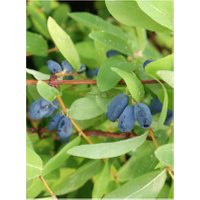 Lonicera kamtschatica ‘Myberry Sweet’ is a great choice for the garden for several reasons: its creamy yellow flowers are attractive in early spring; its delicate scent is a delight; and its crop of plump blue berries are not only sweet and juicy, but so full of antioxidants and Vitamin C that they are considered a
Lonicera kamtschatica ‘Myberry Sweet’ is a great choice for the garden for several reasons: its creamy yellow flowers are attractive in early spring; its delicate scent is a delight; and its crop of plump blue berries are not only sweet and juicy, but so full of antioxidants and Vitamin C that they are considered a
Lagerstroemia indica ‘Rhapsody In Pink’
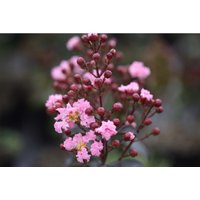 Give your garden a touch of the exotic with Lagerstroemia indica ‘Rhapsody In Pink. This majestic Crepe Myrtle isn’t afraid to show off its dazzlingly pink blooms – starting from June all the way through to September. Elegantly crimped in appearance, the flowers create a pink cloud-like effect, noticeable from distance. In addition to this,
Give your garden a touch of the exotic with Lagerstroemia indica ‘Rhapsody In Pink. This majestic Crepe Myrtle isn’t afraid to show off its dazzlingly pink blooms – starting from June all the way through to September. Elegantly crimped in appearance, the flowers create a pink cloud-like effect, noticeable from distance. In addition to this,
Lavender ‘Rosea’
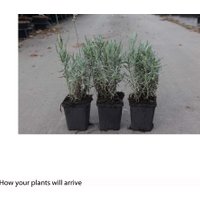 Lavender ‘Rosea’ makes a lovely alternative to traditional purple English lavenders, with its pretty pink blooms. These fragrant, rose-pink flower spikes rise above neat, grey-green foliage on short stems. Ideal for adding a touch of perfume to locations where you are likely to brush past, ‘Rosea’ makes a lovely path edging or low hedge, with
Lavender ‘Rosea’ makes a lovely alternative to traditional purple English lavenders, with its pretty pink blooms. These fragrant, rose-pink flower spikes rise above neat, grey-green foliage on short stems. Ideal for adding a touch of perfume to locations where you are likely to brush past, ‘Rosea’ makes a lovely path edging or low hedge, with
Leucothoe axillaris ‘Twisting Red’
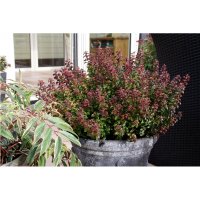 Leucothoe axillaris ‘Twisting Red’ is an eye-catching, evergreen shrub. Glossy, dark-green foliage is topped with burgundy-coloured young shoots, and intriguingly curled leaves add an unexpected texture to container plantings and borders. ‘Twisting Red’ blooms in spring, although its white flowers are insignificant. An ideal ground cover for acid borders, this bushy shrub has a low,
Leucothoe axillaris ‘Twisting Red’ is an eye-catching, evergreen shrub. Glossy, dark-green foliage is topped with burgundy-coloured young shoots, and intriguingly curled leaves add an unexpected texture to container plantings and borders. ‘Twisting Red’ blooms in spring, although its white flowers are insignificant. An ideal ground cover for acid borders, this bushy shrub has a low,
Juniperus sabina ‘Variegata’
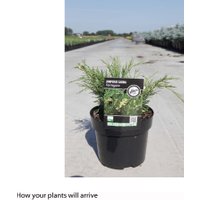 This variety of Juniper is popular due to its variegated foliage that has mellow yellow tips, that turn yellower over the colder months. Juniperus sabina ‘Variegata’ looks great planted alongside other low growing Savin Junipers in rock gardens, or in raised bed borders. They are also an alternative to grass lawns on steep banks. They
This variety of Juniper is popular due to its variegated foliage that has mellow yellow tips, that turn yellower over the colder months. Juniperus sabina ‘Variegata’ looks great planted alongside other low growing Savin Junipers in rock gardens, or in raised bed borders. They are also an alternative to grass lawns on steep banks. They
Juniperus scopulorum ‘Moonglow’
Juniperus scopulorum ‘Skyrocket’
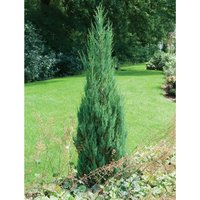 Juniperus scopulorum ‘Skyrocket’ is a popular conifer for gardeners who want to create a formal garden. Its thin, tall upright habit, reminds many of Italian classical gardens such as Tivoli. They look wonderful planted symetrically, in wide borders amongst perennials. In spring the foliage is at its most fresh and brightest, but remains evergreen for
Juniperus scopulorum ‘Skyrocket’ is a popular conifer for gardeners who want to create a formal garden. Its thin, tall upright habit, reminds many of Italian classical gardens such as Tivoli. They look wonderful planted symetrically, in wide borders amongst perennials. In spring the foliage is at its most fresh and brightest, but remains evergreen for
Juniperus communis ‘Hibernica’
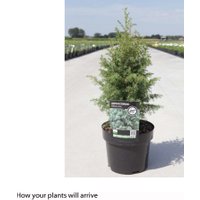 Also known as Irish Juniper, Juniperus communis ‘Hibernica’ is a popular conifer with a dense covering of grey-green, needle-like leaves forming an upright columnar shape. Perfect for formal planting schemes, Mediterranean style gardens or for adding architecture to any borders, this attractive Juniper has been awarded an RHS AGM for its outstanding qualities. Requiring no
Also known as Irish Juniper, Juniperus communis ‘Hibernica’ is a popular conifer with a dense covering of grey-green, needle-like leaves forming an upright columnar shape. Perfect for formal planting schemes, Mediterranean style gardens or for adding architecture to any borders, this attractive Juniper has been awarded an RHS AGM for its outstanding qualities. Requiring no
Juniperus x pfitzeriana ‘Gold Fern’
Juniperus davurica ‘Leningrad’
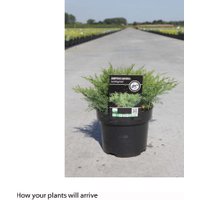 Juniperus davurica ‘Leningrad’ is suitable for all gardeners, thanks to its easy to grow nature and its tolerance of a broad range of growing conditions. The needle-like, grey-green foliage creates a thick carpet, providing brilliant evergreen ground cover. This plant is an ideal choice for those wishing to add interest and colour to their garden,
Juniperus davurica ‘Leningrad’ is suitable for all gardeners, thanks to its easy to grow nature and its tolerance of a broad range of growing conditions. The needle-like, grey-green foliage creates a thick carpet, providing brilliant evergreen ground cover. This plant is an ideal choice for those wishing to add interest and colour to their garden,
Juniperus horizontalis ‘Lime Glow’
 Juniperus horizontalis ‘Lime Glow’ is perfect for those wishing to make an impact in their garden, with its vivid lime green foliage that is held on softly curving branches. During the cold winter months, this stunning foliage changes to a bronze-pink shade which will contrast spectacularly with other evergreens in your conifer bed. This Creeping
Juniperus horizontalis ‘Lime Glow’ is perfect for those wishing to make an impact in their garden, with its vivid lime green foliage that is held on softly curving branches. During the cold winter months, this stunning foliage changes to a bronze-pink shade which will contrast spectacularly with other evergreens in your conifer bed. This Creeping
Hypericum x dummeri ‘Peter Dummer’
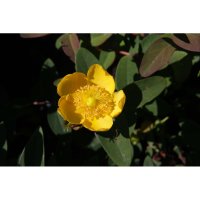 St. John’s Wort is a well known, natural antidepressant, but this variety is sure to cheer you up without even passing your lips. The bushy, semi-evergreen foliage of Hypericum x dummeri ‘Peter Dummer’ produces cheerful, golden blooms in July, August and September, which will bring a smile to your face when you see their orange
St. John’s Wort is a well known, natural antidepressant, but this variety is sure to cheer you up without even passing your lips. The bushy, semi-evergreen foliage of Hypericum x dummeri ‘Peter Dummer’ produces cheerful, golden blooms in July, August and September, which will bring a smile to your face when you see their orange
Hypericum kalmianum ‘Sunny Boulevard’
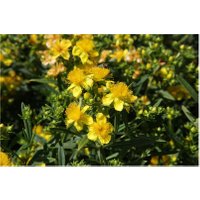 Hypericum kalmianum ‘Sunny Boulevard’ must have been named in midsummer, for that is when the plant’s sunny, golden blooms illuminate the garden. The yellow flowers adorn the plant’s semi-evergreen foliage in July and August, adding ample colour to the middle of any border. The hardy shrub remains interesting throughout the rest of the year, too:
Hypericum kalmianum ‘Sunny Boulevard’ must have been named in midsummer, for that is when the plant’s sunny, golden blooms illuminate the garden. The yellow flowers adorn the plant’s semi-evergreen foliage in July and August, adding ample colour to the middle of any border. The hardy shrub remains interesting throughout the rest of the year, too:
Holly ‘Stokes’
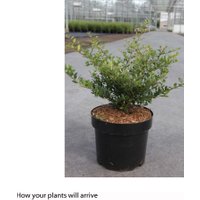 Japanese Holly ‘Stokes’, is a box-leaved holly which can be used to make an excellent formal hedge. This is not the type of holly that you would normally find as a sprig adorning festive puddings! But Ilex crenata is, however, often associated with winter. Indeed, Holly ‘Stokes’ thrives in low temperatures. The plant even produces
Japanese Holly ‘Stokes’, is a box-leaved holly which can be used to make an excellent formal hedge. This is not the type of holly that you would normally find as a sprig adorning festive puddings! But Ilex crenata is, however, often associated with winter. Indeed, Holly ‘Stokes’ thrives in low temperatures. The plant even produces
Hydrangea quercifolia ‘Snowflake’
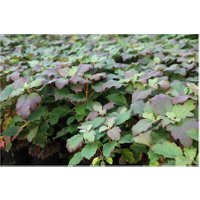 Treasured for its autumnal leaf colours as well as its magnificent conical clusters of flowers, this Hydrangea certainly earns its place in the garden. What’s more, it is happy in sun or dappled shade and is easy to grow. The cone-shaped flowers of Hydrangea quercifolia ‘Snowflake’ begin the summer in bold white, gradually fading to
Treasured for its autumnal leaf colours as well as its magnificent conical clusters of flowers, this Hydrangea certainly earns its place in the garden. What’s more, it is happy in sun or dappled shade and is easy to grow. The cone-shaped flowers of Hydrangea quercifolia ‘Snowflake’ begin the summer in bold white, gradually fading to
Hydrangea serrata ‘Avelroz’
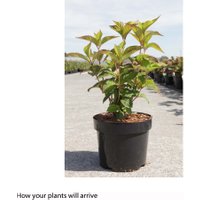 This compact lacecap Hydrangea makes an excellent feature plant in a small garden, and it’s great in the border too, or even in a container. The flower clusters of Hydrangea serrata ‘Avelroz’ are deep pink at the centres, and each one is surrounded by a ring of showy pale pink florets. The flower colour is
This compact lacecap Hydrangea makes an excellent feature plant in a small garden, and it’s great in the border too, or even in a container. The flower clusters of Hydrangea serrata ‘Avelroz’ are deep pink at the centres, and each one is surrounded by a ring of showy pale pink florets. The flower colour is
Hydrangea serrata ‘Bluebird’
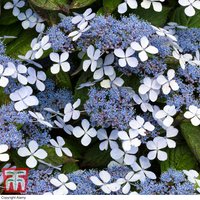 Each of the fascinating flower clusters of this lacecap Hydrangea is made up of a dense, rich, dark blue centre, surrounded by a ring of pale blue florets, which seem to dance around the edge. The flowers of Hydrangea serrata ‘Bluebird’ tone well with the dark green-bronze leaves which turn to shades of red and
Each of the fascinating flower clusters of this lacecap Hydrangea is made up of a dense, rich, dark blue centre, surrounded by a ring of pale blue florets, which seem to dance around the edge. The flowers of Hydrangea serrata ‘Bluebird’ tone well with the dark green-bronze leaves which turn to shades of red and







